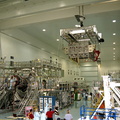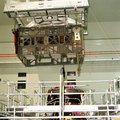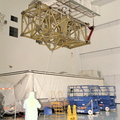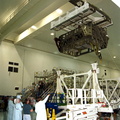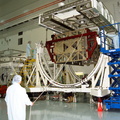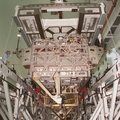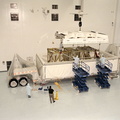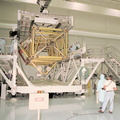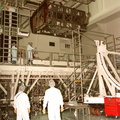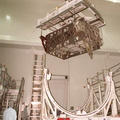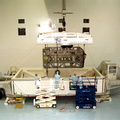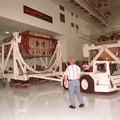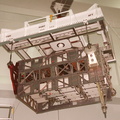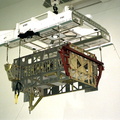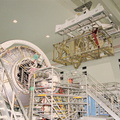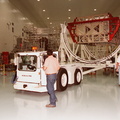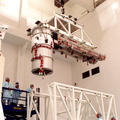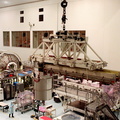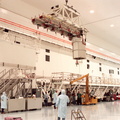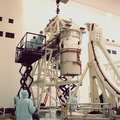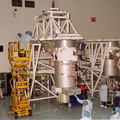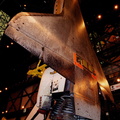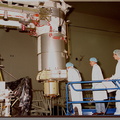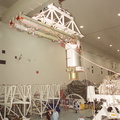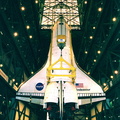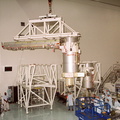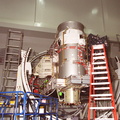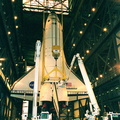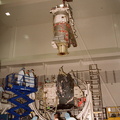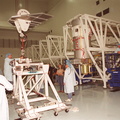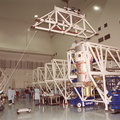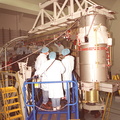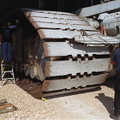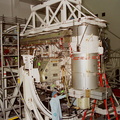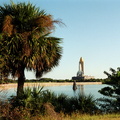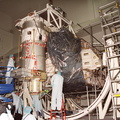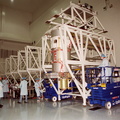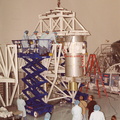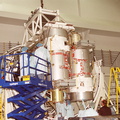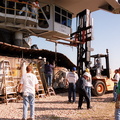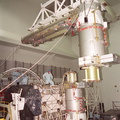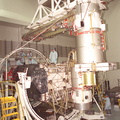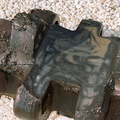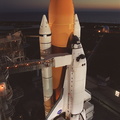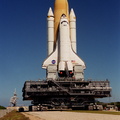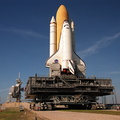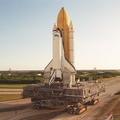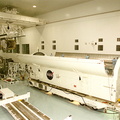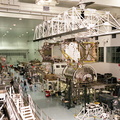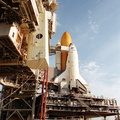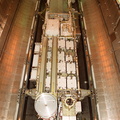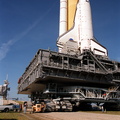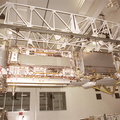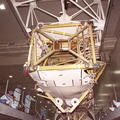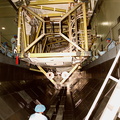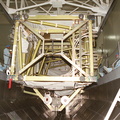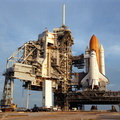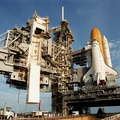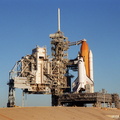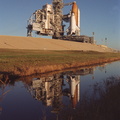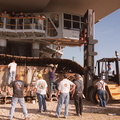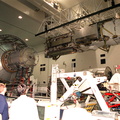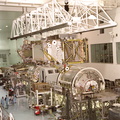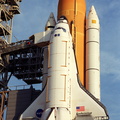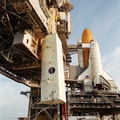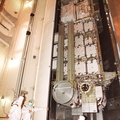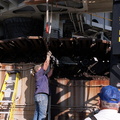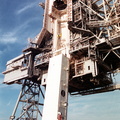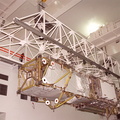
WIKIARCHIVES.SPACE
The Human Spaceflight Archive

On Launch Pad 39B, the payload transport canister, with the P6 integrated truss segment inside, moves higher toward the payload changeout room (PCR). The PCR is the enclosed, environmentally controlled portion of the Rotating Service Structure (RSS) (at left) that supports payload delivery at the pad. At right is Space Shuttle Endeavour with its orange external tank and solid rocket boosters showing behind it. When the RSS is closed around Endeavour, the P6 truss will be able to be moved into the orbiter’s payload bay. The P6, payload on mission STS-97, comprises Solar Array Wing-3 and the Integrated Electronic Assembly, to be installed on the International Space Station. The Station’s electrical power system will use eight photovoltaic solar arrays, each 112 feet long by 39 feet wide, to convert sunlight to electricity. The solar arrays are mounted on a “blanket” that can be folded like an accordion for delivery. Once in orbit, astronauts will deploy the blankets to their full size. Gimbals will be used to rotate the arrays so that they will face the Sun to provide maximum power to the Space Station. Launch of STS-97 is scheduled for Nov. 30 at 10:06 p.m. EST.
Information
- Taken in
- Kennedy Space Center
- Höfundur
- NASA
- Lýsing
-
On Launch Pad 39B, the payload transport canister, with the P6 integrated truss segment inside, moves higher toward the payload changeout room (PCR). The PCR is the enclosed, environmentally controlled portion of the Rotating Service Structure (RSS) (at left) that supports payload delivery at the pad. At right is Space Shuttle Endeavour with its orange external tank and solid rocket boosters showing behind it. When the RSS is closed around Endeavour, the P6 truss will be able to be moved into the orbiter’s payload bay. The P6, payload on mission STS-97, comprises Solar Array Wing-3 and the Integrated Electronic Assembly, to be installed on the International Space Station. The Station’s electrical power system will use eight photovoltaic solar arrays, each 112 feet long by 39 feet wide, to convert sunlight to electricity. The solar arrays are mounted on a “blanket” that can be folded like an accordion for delivery. Once in orbit, astronauts will deploy the blankets to their full size. Gimbals will be used to rotate the arrays so that they will face the Sun to provide maximum power to the Space Station. Launch of STS-97 is scheduled for Nov. 30 at 10:06 p.m. EST.
- Stofnað á
- Þriðjudagur 14 Nóvember 2000
- Source link
- https://science.ksc.nasa.gov/gallery/photos/2000/
- Heimsóknir
- 25
- Einkunnastig
- engin einkunn
- Gefa þessari mynd einkunn
- License
- CC BY-NC-ND
- Modified by WikiArchives
- No (original)
- Sótt
- 0
Keyrt af Piwigo
